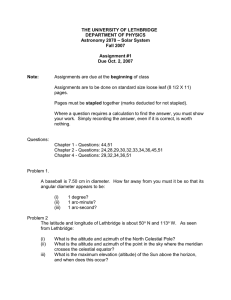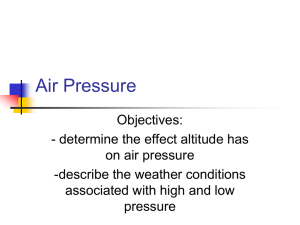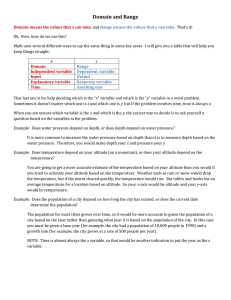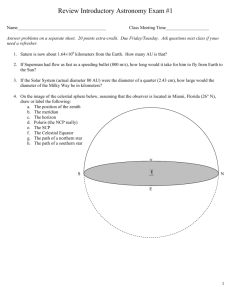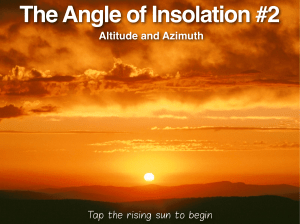Lighthouse in the Sky Quiz Q & A
advertisement
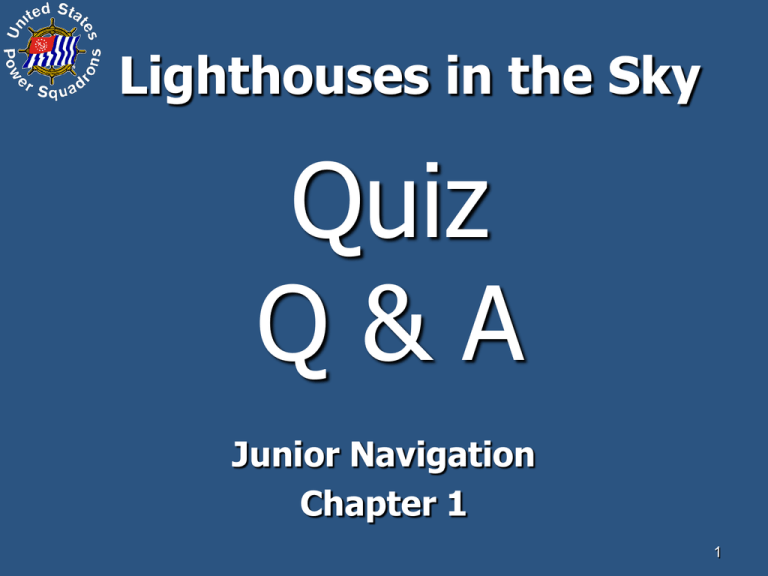
Lighthouses in the Sky Quiz Q&A Junior Navigation Chapter 1 1 Q1 1. If two observers at different DR positions measure the altitude of the same celestial body at the same time, a. the observer closer to the GP of the body measures the larger altitude. b. the observer closer to the GP of the body measures the smaller altitude. c. both observers measure the same altitude. d. the positions of the observers relative to the GP cannot be determined because the azimuths from each observer are not given. 2 Q2 2. Polaris (the North Star) is located exactly over the earth's north geographic pole. a. True b. False 3 Q3 3. The vertical angle measured with a sextant between a celestial body and the horizon is called: a. azimuth. b. intercept. c. altitude. d. co-altitude. 4 Q4 4. A navigator determines the altitude of the sun to be 37°26.1'. What is the distance in nautical miles between the navigator's position and the GP of Sun? 3,153.9nm Solution: 90 ° - 37°26.1´ = 52° 33.9´ 52° x 60nm/° = 3120.0nm + 33.9' x 1nm/' = +33.9nm 3,153.9nm 5 Q5 5. The difference between the calculated altitude (Hc) and the observed altitude (Ho) is called: a. azimuth. b. co-altitude. c. altitude. d. intercept. 6 Q6 6. The method used in plotting a celestial LOP is called "the altitudeintercept method." a. True b. False 7 Q7 7. The geographical position (GP) of a body is defined as the point on the surface of the earth directly beneath the center of the body. a. True b. False 8 Q7 Lighthouses in the Sky End Of Quiz Q&A Junior Navigation Chapter 1 9

